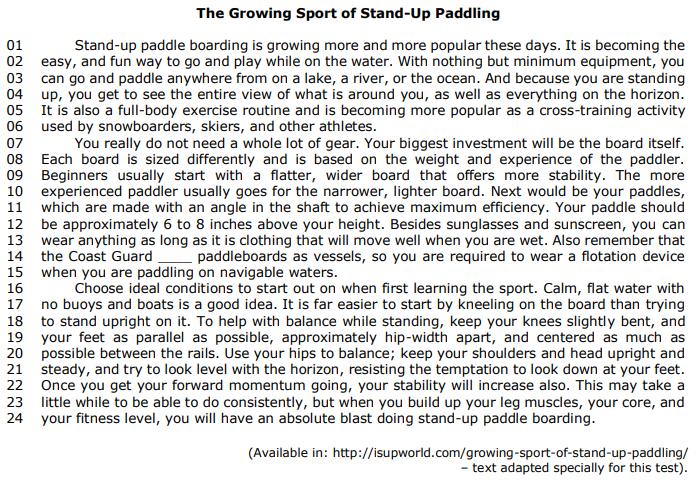Text: The importance of the PowerPoint
as a classroom resource
(Text adapted from Teachers: 5 Tips for Creating Great
PowerPoint Presentations, retrieved
PowerPoint is a resource developed by Microsoft
and released initially in 1990. It is mainly used in
professional meeting presentations all over the
world.
One of these professions is in educational area:
teacher.
PowerPoint presentation is spread among
teachers because it is different from lecturing or
teaching with a textbook; it is also a way of sharing
content with students.
To produce a PowerPoint correctly, teachers need
to know how to put the slides together, it can be an
effective way of reinforcing content to students so
that they are better able to retain it. Otherwise,
teachers can print and distribute the PowerPoint
presentation or post it online, so students can go
back and access it as reference material. However,
if it is not put together correctly, a PowerPoint
presentation can disengage and make students
bored.
To develop PowerPoint presentation is simple and
it can also provide a fun time noticed by its
characteristics: basic, simple, and not distracting, it
can be focused on keywords; for instance, always
be sure to include a summary slide of what the
presentation is intending to accomplish as well as a
table of contents on the different topics that will be
covered in the program. The summary slide serves
as the main topic and what students should learn
after viewing the presentation. Then, at the end of
the PowerPoint presentation, teachers should
include another summary slide, going over
everything that was just covered and, again,
highlighting the main point.
Bottom line
PowerPoint presentations need to have a purpose
and the teacher must make sure that the purpose is
understood.
Add pictures
Teachers can reinforce the content with pictures,
charts, symbols, and other images. In fact,
sometimes it’s better to have more pictures than text
in a PowerPoint presentation, because images work
to reinforce a content main point.
Teachers typically will just share it with their
classes, so they can pull images straight from the
Internet. However, for teachers who are making
more public and widespread presentations,
copyright law needs to be considered (Brazil
Information Access Law nº 12.527; Art. 31;
paragraph 3; item II).
Add video
Pictures can help to reinforce a main point or
support content, as well as videos. Some research
affirm that students enjoy watching videos and
retain information from them well, especially if the
video is engaging, interesting and informative.
Teachers can embed videos right from YouTube or
from their desktops to complement a PowerPoint
presentation.
Practice
Nothing turns off a class like a poorly put together
PowerPoint presentation, so teachers should
always be sure to do a quick rehearsal before they
present it to the class. While testing it, make sure all
the images load up on the slides, videos load up
properly and audio works, too. Also, it’s important
for teachers to make sure that there’s a way to
connect their computer, or upload anything that’s
storing the PowerPoint presentation, to a larger TV
monitor or projector screen so the whole class does
not have to huddle around a computer screen to
view it. Teachers should also make sure that any
text can be read and understood. Be sure that the
color scheme is good.
Make it fun
A PowerPoint presentation can be an innovative
way of teaching. It’s a more interesting and
engaging way for students to learn than the typical
lecture. Teachers should embrace this teaching
resource and have fun with it. Throw in some jokes,
possibly some funny pictures and be sure to get
creative with presentations.
As we previously noted, the more students enjoy
a lecture, presentation, or activity, the more likely
they are to retain information.
